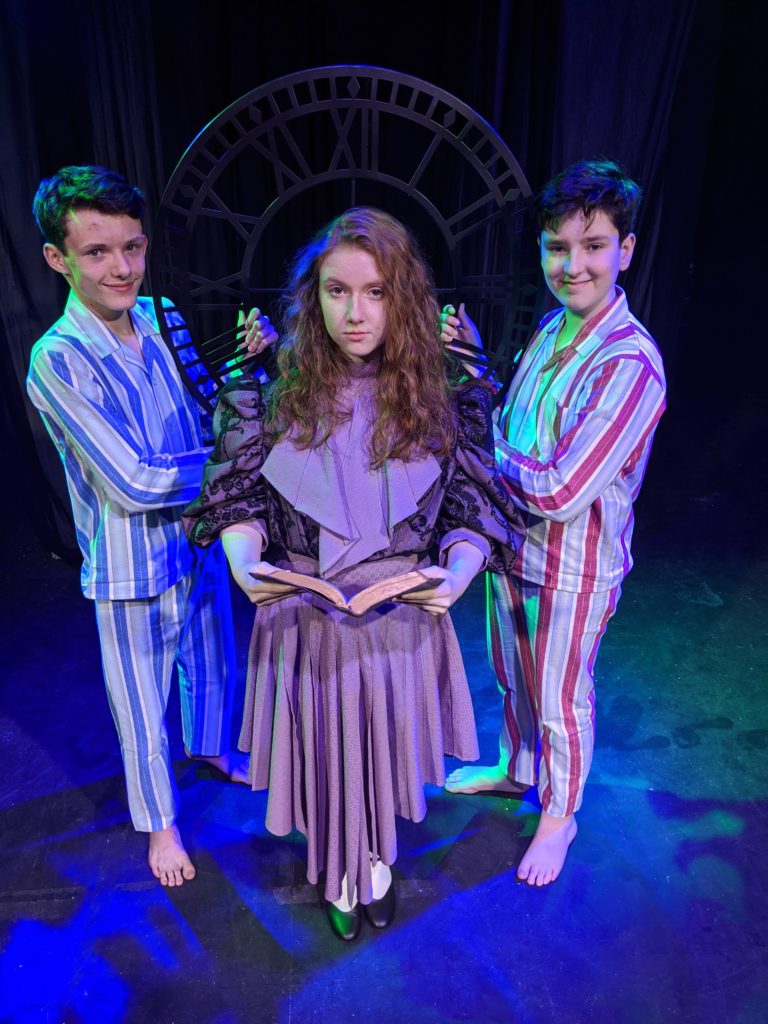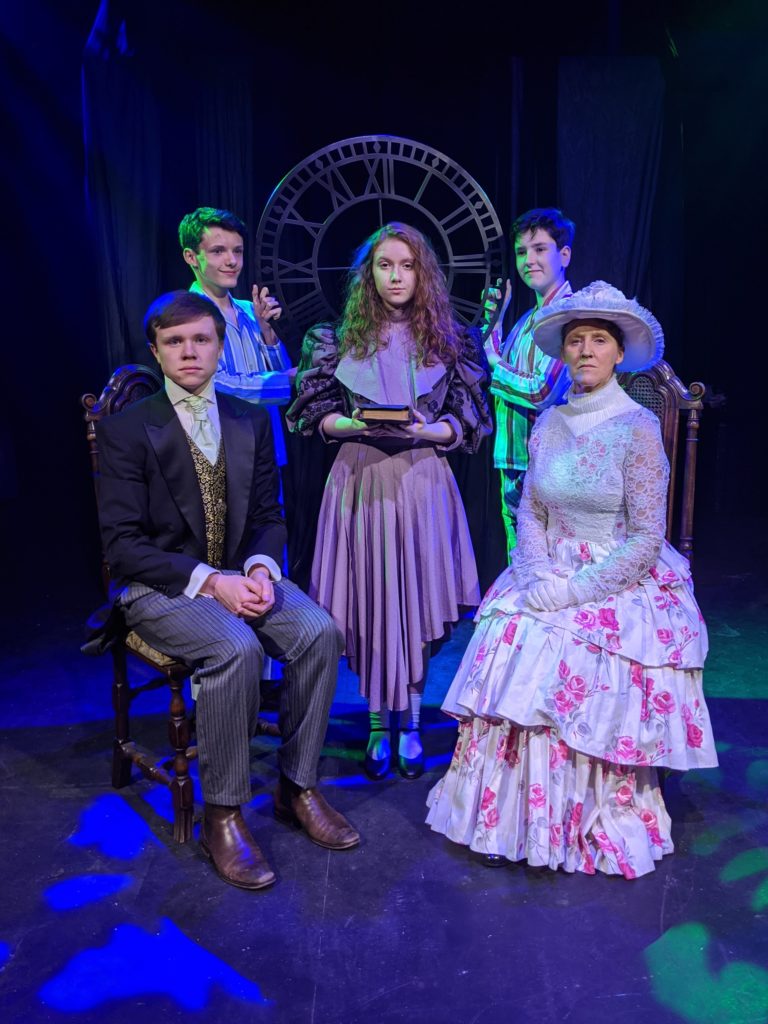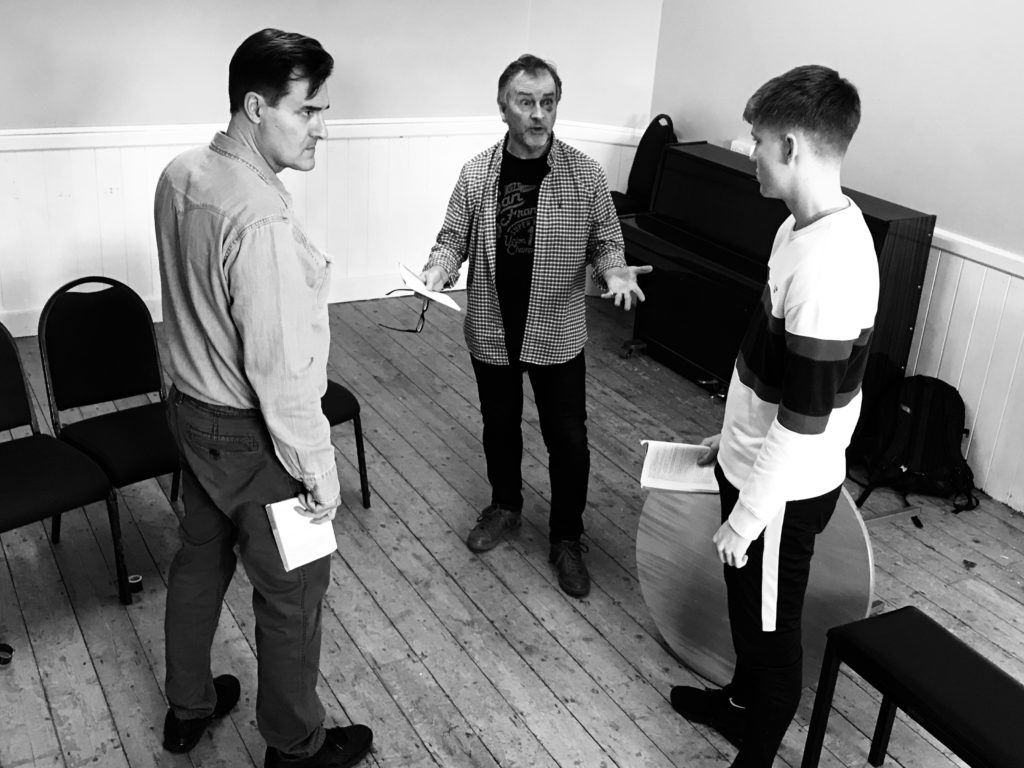
REVIEW: Tom’s Midnight Garden, Pick Me Up Theatre, John Cooper Studio, Theatre @41 Monkgate, York, until Saturday. Box office: 01904 623568; at pickmeuptheatre.com or in person from York Gin, 12, Pavement, and York Theatre Royal box office
IT is grimly impossible not to see everything anew in the context of the crippling Coronavirus.
Within moments of Tom’s Midnight Garden opening, the word “quarantine” is mentioned, and audience members turn to each other – keeping a certain distance, of course – in recognition of its heightened resonance.
Adapted for the stage by David Wood, the doyen of such transitions from print to boards, Philippa Pearce’s beloved novel is a testament to the power of imagination, perhaps the most precious gift of all in childhood, but one that dims through experience as we age.
Right now, we might all wish that the clock could strike 13 and take us to somewhere magical, as it does in Tom’s Midnight Garden, although George Orwell’s opening line to 1984, where the clocks en masse were doing exactly that, is contrastingly heavy with sinister forewarnings.
Pick Me Up director-designer Robert Readman sets up the black-box John Cooper Studio in a traverse configuration, the audience to either side of a stage book-ended by a door and lonely Tom’s bedroom away from home at one end and a door and bored brother Peter’s bedroom back home at the other, where he is quarantined with measles.
The setting is the dull 1950s, when Tom (a role shared by Pick Me Up debutant Jimmy Dalgleish, in action on press night, and Jack Hambleton) is staying with his kindly Aunt Gwen (Maggie Smales) and pipe-smoking, Daily Mail-reading Uncle Alan (Andrew Isherwood).
At Tom’s end too is the aforementioned grandfather clock, with its figure of an angel and an inscription, Time No Longer, taken from the Book of Revelation, Chapter 10, Verse 6, and still today the subject of much conjecture as to its possible meaning.
Even within Tom’s Midnight Garden, it draws a scoffing comment, but if instead it can been seen as advocating that the limitations, the boundaries, of time be removed, rather than as the end of time, then it becomes the doorway to limitless imagination.

On the John Cooper Studio’s mezzanine level are not only the bedrooms but also passageways to either side (not ideal, alas, as anyone moving above you on your side is out of sight, and Readman might need to re-block those moments to facilitate seeing them better).
Musical director Tim Selman, meanwhile, is positioned in clear view at his piano beside Atkin’s Peter. Behind him are cellist Lucy McLuckie and violinist Robert Bates, and together they perform a second string to Atkin’s bow: his newly composed score that accompanies scenes played out in the midnight garden of the title.
Occasionally on first night, the beautiful music impacted on the clarity of the dialogue but the sound balance can be remedied.
A chorus gathers, chiming the mantra “Time no longer”, as if bringing the clock to speaking life. Each day, that clock is wound up fastidiously by the mysterious Mrs Bartholomew (Beryl Nairn), so stern of face she unnerves Tom’s aunt and uncle.
When it strikes 11, 12, 13, pyjama-clad, inquisitive Tom leaves his bed, makes his way downstairs, across the hall and out of the door into a magical garden, initially depicted as a bright light. A garden that only he can enter. A Victorian garden, where he encounters Victorian orphan Hattie (Olivia Caley), the joyless Aunt Grace (Beryl Nairn, part two), Bible-reading gardener Abel (Isherwood, part two) and assorted playful Victorian children.
The garden scenes are played out on the empty expanse between the two doors. No flowers, no secret passageways, everything left to our imagination, save for chairs and gathered, elasticated black and white ribbon strands at all four corners through which cast members pass, not exactly with the greatest of ease.
Decide for yourself what they symbolise; maybe the erosion of time; maybe the imagination at work; maybe time travel; maybe they just look aesthetically pretty, matching the black and white of Readman’s overall design.
Here, across the time divide, Tom and Hattie can see each other when others cannot see him, and time passes at a different rate for each of them. This is a place of mystery and magic, but something darker if Abel’s biblical bent is to be believed, as if Tom were as meddlesome as Shakespeare’s Puck or J M Barrie’s Peter Pan.
Although imaginative, neither Readman’s direction, nor design, are as magical as his best work. Wood’s script, however, captures fully Pearce’s possibilities of make-believe, drawing you deep into Tom and Hattie’s world, where sweetness and sadness elide, brought to life so evocatively by the outstanding Caley, Dalgleish, Atkin, Smales and Nairn and Isherwood at the double.
Charles Hutchinson







